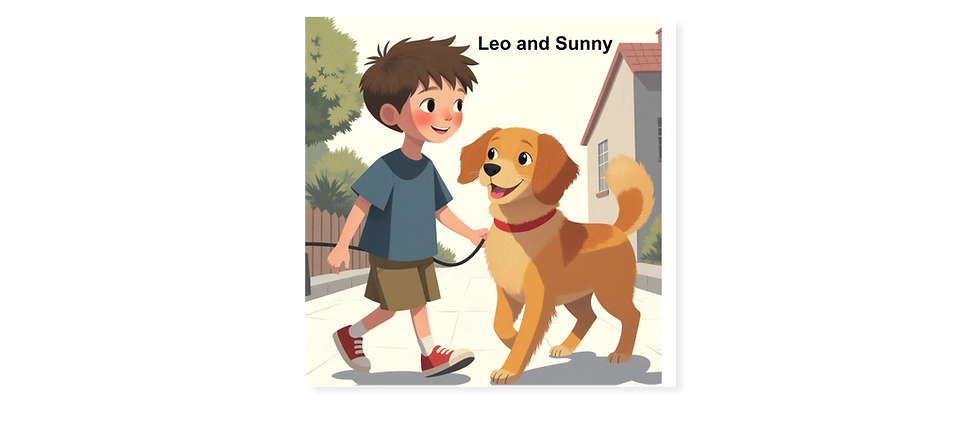Create brilliant ideas - Lateral Thinking
- Paul Larkin
- Jul 6, 2022
- 4 min read
Updated: Jul 7, 2022
LATERAL THINKING - Edward De Bono
In this blog you will learn how to use lateral thinking to create new ideas. The mind is brilliant at associating two events. For example, if you see a puppy for the first time and it comes to you and wants to play – you will associate dog and friendship.
However, if there is more than one response to the first impression, the mind will initially remember the first response and then associate the other responses to that first impression. For example, if you were at a party and the first impression was the nice food, that would be the first impression. The great music, the lighting, the drinks etc would all be associated with that first impression of ‘nice food’.
The associations are there but they need to be brought to the surface. The major memory of a situation is the first impression.
That is why lateral thinking is useful. It was created by Edward De Bono and has proved successful in aiding creativity. The purpose of lateral thinking is to generate many associations to that first impression. The aim is to generate lots of possible alternative associations. Edward De Bono calls these associations 'patterns' and speaks of the mind as a 'self-organising memory system'.
Lateral thinking is the process that generates alternative interpretations of the same information. This enables you to put existing concepts together in a new way. It enables creativity. It differs from 'brainstorming' in that lateral thinking forces the mind to come up with alternatives concepts rather than waiting for inspiration as is the case with brainstorming.
STAGE ONE: How do I generate lots of ideas?
1 List all alternatives
The aim at this point is to generate ideas. There is no judgment about the value or rationality of the association. The aim is to write down as many ideas as you can that may be related to the topic.
2 Challenge assumptions
The aim here is to come at the task from a different angle. Take the topic you are researching and ask a series of “What if . . .?” questions. Then try “Why . . ? questions. Then try “Why not . . .?” questions.
3 Fractionation
The aim now is to generate even more ideas by creating associations to associations. Take each association produced and generate more associations to related to it.
4 Reversal
In this stage, you are generating ideas that are the opposite of each association. Take each association and produce associations that seem their opposite.
5 Analogy
(An ‘analogy’ is when an object or a process is compared with something else.)
In this section, you take the association and ask, “What else is like this?”
Edward De Bono uses the examples of ‘discouraging rumours’. He uses the analogy of a snowball rolling down a mountain and getting bigger and bigger, If you stop it immediately –the snowball stays small. The moral being that a rumour would remain insignificant if it were squashed immediately.
6 PO
PO is the trademark of Edward De Bono. It is derived from the words: hyPOthesis, POssible, supPOse. He suggests that PO stands for ‘Provocative Operation’,
PO is code for “I’m only playing”. There is no intention to be logical or correct or judgmental. The only reason for this phase of creation is to generate lots of ideas and possibilities.
In practice, you would take the topic and then put PO in front of it. You would then come up with many alternative concepts.
For example, you could use PO to contrast your topic with a random word. The mind has an uncanny ability to link any two concepts. The resulting concept could be a unique approach to the problem under consideration.
STAGE TWO: How do I pick the best idea?
a) DICE METHOD
Grade each association a number. Select what you consider to be the best six. And then toss a dice. If the selected association seems good, then go with it. If not, toss the dice and start again.
b) IDEAL SOLUTION METHOD
Write down what you would like the solution to be. Compare each alternative association with your ideal solution. The closest alternative is the selection solution.
c) EXPLAIN METHOD
Identify six of your best associations. Explain to an imaginary friend why you created each alternative association. Read through your reasons. Select the the association that has the most reasons.
What is the Creative Process?
Mihaly Csikszentmihalyi, in his book Creativity – the Psychology of Discovery and Invention’, describes the creative process. The creative steps are:
1 Preparation
2 Incubation
3 Insight
4 Evaluation
5 Elaboration
1 Preparation
Here the person absorbs themselves in the task at hand. All and every possibility is generated.
2 Incubation
All possible thoughts are turned over to the subconscious. Unrestrained by logic, the subconscious can discover unusual associations and possible storylines.
3 Insight
The Eureka moment when you discover the answer.
4 Evaluation
You mentally decide which concepts you keep and which you toss.
5 Elaboration
All decisions have been made. You feel happy with your choices of ideas. You take action,
Conclusion
The creative process is a combination of stages. It is a process. Ideas must be generated. There must be alternatives. The subconscious must be allowed freedom to abandon logic. Bit by bit, your amazing mind comes up with a combination of ideas that forms the basis of a unique idea. Creation is definitely a process. It is not a single event.
end




Comments